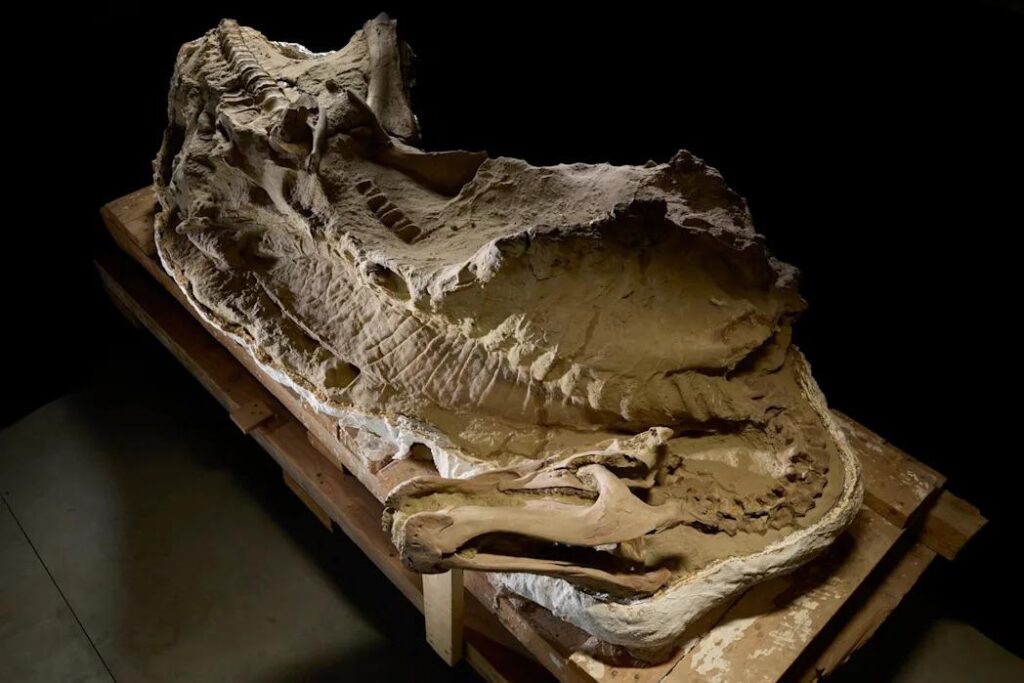In a groundbreaking discovery that offers an unprecedented glimpse into the prehistoric world, scientists have unveiled a collection of rare dinosaur mummies that are shedding new light on the lives of these ancient creatures. Preserved with remarkable detail, these fossils provide valuable insights into dinosaur anatomy, behavior, and ecology, enabling researchers to reconstruct how they lived millions of years ago. This breakthrough not only deepens our understanding of dinosaur biology but also marks a significant milestone in paleontological research.
Rare Dinosaur Mummies Offer Unprecedented Glimpse into Prehistoric Life
The discovery of these exceptionally well-preserved dinosaur mummies has revolutionized paleontologists’ understanding of prehistoric ecosystems. Unlike typical fossils, these specimens retain soft tissues, skin impressions, and even traces of internal organs, allowing scientists to build a highly detailed picture of how these ancient creatures looked, moved, and interacted with their environment. Recent analyses highlight the intricacies of their musculature and color patterns, offering clues about their behavior, camouflage strategies, and potential social dynamics.
Using advanced imaging technologies and biochemical analysis, researchers have identified key features that were previously unknown:
- Skin texture and scale arrangements indicative of species adaptation to different climates
- Preserved stomach contents shedding light on dietary habits and food chain position
- Traces of injuries and healing revealing survival strategies and predator-prey interactions
| Feature | Insight Gained |
|---|---|
| Skin Pigmentation | Camouflage patterns for environmental adaptation |
| Muscle Structure | Enhanced mobility and hunting strategies |
| Stomach Contents | Evidence of omnivorous diet in some species |
| Injury Marks | Clues to predator-prey encounters and healing |
Cutting Edge Technology Reveals Skin, Muscle, and Behavioral Clues from Fossilized Remains
Advances in imaging and chemical analysis have allowed paleontologists to extract unprecedented details from some of the rarest dinosaur specimens known as “mummies.” These fossilized remains preserve not only bones but also impressions of soft tissues such as skin and muscle, revealing textures, colors, and arrangement that were once thought impossible to decipher. Using techniques like laser-stimulated fluorescence and synchrotron radiation, researchers have detected microscopic pigment structures and muscle fiber patterns, providing a clearer picture of dinosaur physiology and how these ancient creatures moved and interacted in their ecosystems.
Key insights uncovered include:
- Skin pigmentation patterns that suggest camouflage or display functions
- Muscle attachment sites indicating locomotive capabilities
- Behavioral traces such as healed injuries and bite marks
| Technology | Information Gleaned |
|---|---|
| Laser-stimulated fluorescence | Soft tissue patterns & pigment cells |
| Synchrotron radiation | Muscle fiber microstructures |
| CT Scanning | Internal bone architecture |
Experts Urge Increased Funding for Preservation and Study of Exceptional Dinosaur Specimens
Leading paleontologists emphasize the critical need for increased financial support to safeguard and thoroughly analyze extraordinary dinosaur specimens, often referred to as “dinosaur mummies.” These rare finds feature preserved soft tissues and skin impressions, offering unparalleled insights into the anatomy, behavior, and environment of creatures that roamed the Earth millions of years ago. Experts argue that without adequate funding, precious information encoded in these fossils could be lost to deterioration or insufficient study, hampering efforts to deepen our understanding of prehistoric life.
Specialized research initiatives rely heavily on state-of-the-art technology and meticulous conservation techniques, both of which require substantial investment. Funding not only supports excavation and preservation but also facilitates interdisciplinary collaboration, enabling scientists to apply advanced imaging, biochemical analysis, and 3D modeling. Key areas benefiting from boosted funding include:
- High-resolution CT scanning and digital reconstruction
- Preservation labs for soft tissue integrity
- Fieldwork expeditions to recover new specimens
- Cross-disciplinary studies combining paleontology, biology, and geology
| Funding Area | Potential Impact |
|---|---|
| Conservation Technologies | Preserve delicate tissues and skin layers |
| Analytical Tools | Reveal cellular and molecular structures |
| Field Excavations | Discover new, unparalleled specimens |
| Educational Outreach | Enhance public awareness and support |
The Way Forward
As researchers continue to study these extraordinary rare dinosaur mummies, each discovery brings us closer to understanding the behaviors, habitats, and ecosystems of these ancient creatures. The preservation of soft tissues and detailed skeletal structures offers an unprecedented window into prehistoric life, reshaping our knowledge of dinosaur biology. With ongoing advancements in technology and exploration, scientists are poised to unravel even more secrets from the distant past, bridging millions of years to illuminate the world of dinosaurs like never before.
